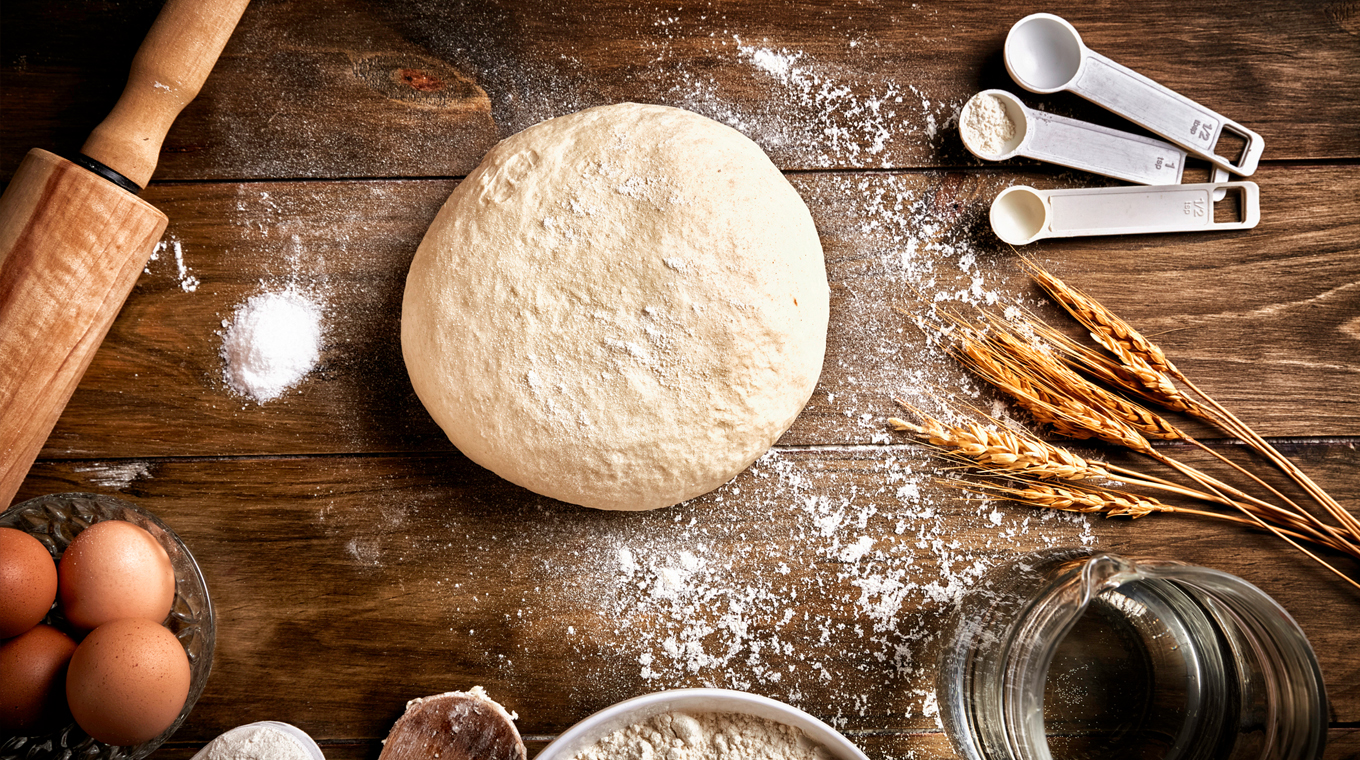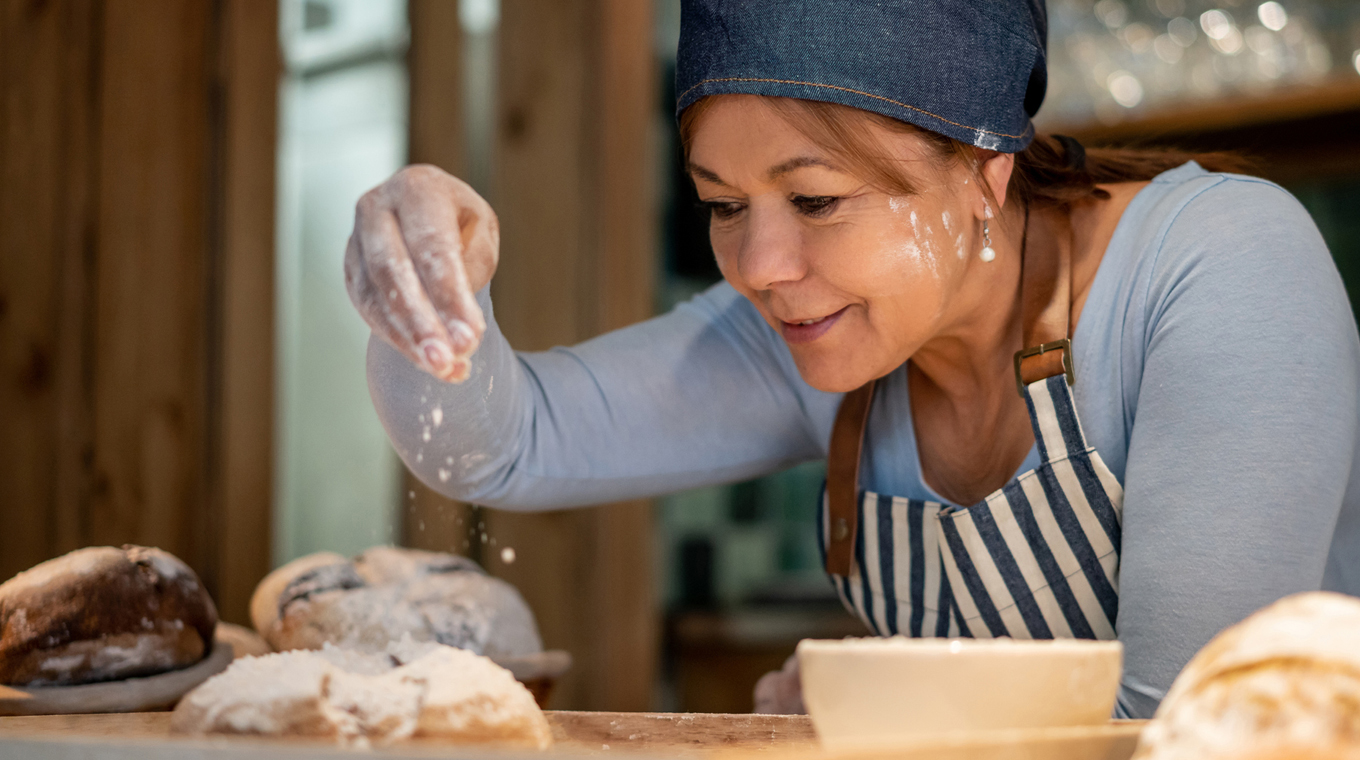
In this article
During a global pandemic, with shoppers panic-buying or DIYers taking up comforting hobbies like gardening and baking bread, there are bound to be supply shortages. We’ve seen it with tomato seeds and even yeast for baking. In the early weeks of stay-at-home-orders throughout the US, Nielsen market research indicated a 41% increase in dry yeast sales over 2019 sales.
Bread baking for beginners

For some, stay-at-home-orders have given experienced cooks the time and space they need to get back to some of their favorite things. Elisa Cullen, mom to a teenage son, has been working from home for several weeks and finds solace in baking bread.
“For me, baking bread is all about comfort: mind, body, and soul. Although a simple task, the mere act of kneading brings the focus away from my anxiety over the current situation and directs it to fond memories of baking alongside my mother,” she told Mom.com. She feels a connection to the beautiful spirit of her Italian grandmother with each loaf she bakes. “Mostly, Elisa confides, “there is nothing more calming than the smell of baking bread wafting through the home, and the pleasure of that first warm slice.”
For those of us who are new to baking bread or want to perfect our skills, there are a few bread-making tips beginners need to know. Measuring ingredients carefully is imperative when baking bread, but there are other factors that go into baking the perfect loaf of bread.
Chef Kimberly Bryant, owner of The Cookie Emporium, shared with Mom.com a few common issues bakers encounter and what causes them. “Too little salt will result in a flat-tasting bread while a dark crust is caused by adding too much sugar or milk,” she advised. “When the crust of your bread splits or bursts, it’s often the result of adding too much liquid.”
Easy bread recipe

Finding just the right recipe can be challenging. No one wants to waste any amount of yeast these days. Bryant shared a tried-and-true bread recipe that should yield great results every time.
- 1 package (1/4 ounce) active dry yeast
- 2 1/4 cups warm water (110° to 115°)
- 3 tablespoons sugar plus 1/2 teaspoon sugar
- 1 tablespoon salt
- 2 tablespoons canola oil
- 6 1/4 to 6 3/4 cups bread flour
In a mixing bowl, dissolve the yeast and 1/2 teaspoon sugar in warm water. Let it rest until bubbles form on the surface. Whisk together the remaining 3 tablespoons sugar, salt, and 3 cups flour. Stir oil into yeast mixture; pour into the flour mixture and beat until smooth.
Stir in enough remaining flour, 1/2 cup at a time, to form a soft dough. Turn onto a floured surface and knead until smooth. This should take 8-10 minutes. Place in a greased (EVOO) bowl, turning once to grease the top. Cover and let rise in a warm place until doubled, 1 1/2 to 2 hours.
Punch dough down. Turn onto a lightly floured surface; divide dough in half. Shape each into a loaf. Place in 2 greased 9-by-5 inch loaf pans. Cover and let rise until doubled, 1 to 1 1/2 hours.
Bake at 375° for 30-35 minutes until golden brown and bread sounds hollow when tapped or has reached an internal temperature of 200°. Remove from pans to wire racks to cool.
Making bread without yeast

If you’re having a difficult time finding yeast in your grocery store, quick bread may be the way to go. Banana bread is just one quick bread you can make without yeast. A quick bread uses another leavening agent in lieu of yeast or eggs — usually baking soda or baking powder. Beer bread, zucchini bread, and even an ice cream bread are simple examples of easy, quick bread recipes you can make without yeast.
Fleischmann’s Yeast Company operates three yeast production processing plants in the US. John Heilman, the vice president of yeast manufacturing, says that the company’s buffer inventory was depleted quickly due to unprecedented demand.
“We are not leaving any stone unturned to put the supply back into the pipeline,” Heilman told USA Today. He estimates it will take up to two months to get grocery store shelves restocked.
Not only has yeast been in short supply, but shoppers are also finding store shelves low on flour as well. A historical mill in the UK even started producing flour again after ending commercial production in 1970. The Sturminster Newton Mill, now a working museum steeped in 1,000 years of history, is taking this opportunity to give back to the local community.
If finding flour has been difficult for you, and you don’t live near a working mill, there is hope. Keto-friendly bread recipes work if you have a flour substitute on hand for your bread baking.







